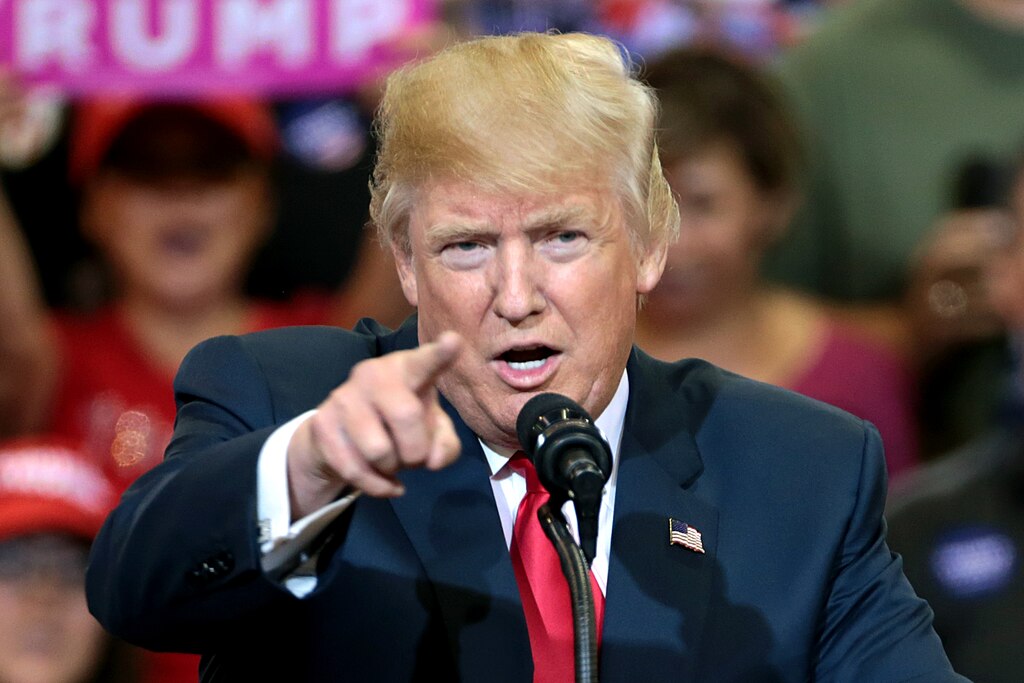As President Donald Trump’s administration enters its second term, improving U.S. ports and logistics infrastructure has emerged as a key policy focus. Trump’s strategies aim to modernize aging infrastructure, enhance efficiency, and secure America’s position in global trade amidst growing international competition.
Investing in Port Infrastructure and Technology
Trump’s plan includes a significant increase in federal investment for modernizing port facilities, with a particular emphasis on automation and technological upgrades. The administration has proposed funding initiatives to expand container-handling capacities, improve dredging operations, and adopt smart technologies such as AI-driven logistics platforms.
According to White House officials, these measures aim to alleviate bottlenecks that have plagued U.S. ports in recent years, contributing to delays in shipping and rising costs for businesses. By integrating advanced tracking systems and data analytics, the administration hopes to streamline cargo movement and reduce processing times at major ports like Los Angeles, Long Beach, and Savannah.
However, critics argue that automation efforts could displace port workers, exacerbating unemployment in communities reliant on these jobs. Unions have voiced concerns over the lack of guarantees for job protections, demanding more transparency and inclusion in planning discussions.
Strengthening Supply Chain Resilience
In addition to infrastructure upgrades, Trump’s logistics strategy focuses on strengthening supply chain resilience against disruptions. The administration plans to incentivize private-sector investments in domestic manufacturing and warehousing facilities to reduce dependency on foreign suppliers.
The proposed policies include tax breaks for companies that onshore production and stockpile critical goods within U.S. borders. Additionally, the administration is negotiating partnerships with state governments to develop regional logistics hubs aimed at optimizing freight movement and reducing transportation costs.
While these measures have been praised for their potential to bolster economic security, some industry experts caution that the timeline for implementation may be overly ambitious. Critics also highlight the absence of clear funding mechanisms for large-scale projects, questioning whether the administration’s promises will translate into tangible results.
Public Reaction: Praise, Criticism, and Skepticism
Trump’s proposed logistics strategies have sparked a lively debate on social media, with opinions ranging from strong support to outright skepticism:
- @LogisticsExpert2025: “Finally! Ports have been a mess for years. Glad to see Trump prioritizing infrastructure improvements!”
- @UnionVoiceUSA: “Automation is code for job cuts. Trump’s plan threatens hardworking Americans in port communities!”
- @SupplyChainGuru: “Tax breaks for domestic production are a step in the right direction. But will it be enough?”
- @SmallBizOwner: “Faster shipping means lower costs for small businesses. Hope this plan delivers what it promises.”
- @CriticWatch2025: “Big talk, no clear funding. We’ve heard these promises before. Where’s the accountability?”
- @TradePolicyFan: “Strong ports mean strong trade. Let’s hope Trump sticks to these plans and gets them done!”



 Canada Signals Delay in US Tariff Deal as Talks Shift to USMCA Review
Canada Signals Delay in US Tariff Deal as Talks Shift to USMCA Review  Dan Bongino to Step Down as FBI Deputy Director After Brief, Controversial Tenure
Dan Bongino to Step Down as FBI Deputy Director After Brief, Controversial Tenure  U.S. and China Push for Ceasefire as Thailand–Cambodia Border Clashes Escalate
U.S. and China Push for Ceasefire as Thailand–Cambodia Border Clashes Escalate  Union-Aligned Investors Question Amazon, Walmart and Alphabet on Trump Immigration Policies
Union-Aligned Investors Question Amazon, Walmart and Alphabet on Trump Immigration Policies  U.S. House Advances GOP Healthcare Bill as ACA Subsidies Near Expiration
U.S. House Advances GOP Healthcare Bill as ACA Subsidies Near Expiration  Trump Administration Plans Major Increase in Denaturalization Cases for Naturalized U.S. Citizens
Trump Administration Plans Major Increase in Denaturalization Cases for Naturalized U.S. Citizens  Putin Signals Possible Peace or Continued War in Ukraine at Major Year-End Address
Putin Signals Possible Peace or Continued War in Ukraine at Major Year-End Address  Barham Salih Elected as Next UN High Commissioner for Refugees
Barham Salih Elected as Next UN High Commissioner for Refugees  Honduras Election Recount Delayed Amid Protests and Political Tensions
Honduras Election Recount Delayed Amid Protests and Political Tensions  Trump Signals Progress in Ukraine Peace Talks Ahead of U.S.–Russia Meeting
Trump Signals Progress in Ukraine Peace Talks Ahead of U.S.–Russia Meeting  Trump Attends Dover Ceremony Honoring U.S. Personnel Killed in Syria
Trump Attends Dover Ceremony Honoring U.S. Personnel Killed in Syria  Fernando Haddad Confirms He Will Not Run for Office in 2025, Signals Possible Exit as Brazil’s Finance Minister
Fernando Haddad Confirms He Will Not Run for Office in 2025, Signals Possible Exit as Brazil’s Finance Minister  Trump Announces $1,776 Cash Bonus for U.S. Military Personnel Ahead of Christmas
Trump Announces $1,776 Cash Bonus for U.S. Military Personnel Ahead of Christmas  U.S. Initiates $11.1 Billion Arms Sale to Taiwan Amid Rising China Tensions
U.S. Initiates $11.1 Billion Arms Sale to Taiwan Amid Rising China Tensions  U.S. Senators Move Toward Deal to Strengthen Military Helicopter Safety Rules
U.S. Senators Move Toward Deal to Strengthen Military Helicopter Safety Rules  Syria, Kurds and U.S. Race to Show Progress on SDF Integration Deal
Syria, Kurds and U.S. Race to Show Progress on SDF Integration Deal  UN Warns Gaza Humanitarian Aid at Risk as Israel Registration Rules Threaten NGO Operations
UN Warns Gaza Humanitarian Aid at Risk as Israel Registration Rules Threaten NGO Operations 
































